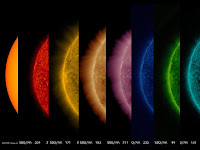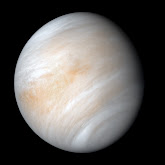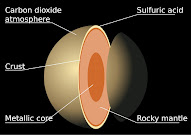An epidemic is a disease that can be spread from person to person and affects many individuals all at the same time in a location where the disease is not permanently prevalent.
A pandemic is like an epidemic, but is much larger in scale. Pandemics can affect whole countries, continents, and sometimes even the entire world.
Today, we're going to take a look at the most destructive epidemics and pandemics in human history.
After that, we'd be grateful if you'd leave a comment and let us know what unsettling historical topics you would like to read about. OK.
Ready to read some scary stuff? , Remember, we did warn you.
The Plague Of Athens:
Striking at about 430 BCE during the Peloponnesian War, the Plague of Athens took out somewhere in the area of 100,000 people within a three year period. If that doesn't sound too impressive, keep in mind that's a full 25% of the entire Athenian population of the day. In order to help others later identify it, the Athenian General and historian Thucydides
 |
| Thucydides |
recorded his own eyewitness account of the plague and its symptoms. He described his sickness as presenting with a high fever, diarrhea, and a pustular rash. Equally disturbing is Thucydides' description of the social effects of the epidemic. He claimed that a widespread belief the plague could not be survived caused people to start behaving like criminals and mobs. He wrote, "The catastrophe was so overwhelming that men, not knowing what would happen next to them, became indifferent to every rule of religion or law." Also known as the Plague of Galen,
The Antonine Plague:
 |
| The Antonine Plague |
Ravaged the Roman Empire from 165 to 180 CE. While the nature of the plague isn't known today, it's believed that it might have been an outbreak of measles or smallpox. Whatever the case, historians think it was likely brought to Rome by troops returning from war. At its most deadly, the Antonine Plague was killing a full quarter of all who became infected by it. In the end, it is believed to have killed roughly 60 million people. And it wasn't just the poor and needy who suffered. The list of the dead is believed to have included. Lucius Verus, a Roman emperor.
 |
| Lucius Verus |
The Plague Of Cyprian:
 |
| The Plague Of Cyprian |
From about 249 to 262 CE, the Roman Empire was afflicted by an epidemic that eventually came to be known as the Plague of Cyprian, in honor of the early Christian saint and writer who recorded the event. Contemporary accounts suggest the symptoms included vomiting, bloodshot eyes, loss of hearing, blindness, and loss of coordination. Historians don't agree on which disease was behind the plague, but candidates include smallpox, some type of flu, or a strain of the Ebola virus. It is believed that the epidemic at its worst, was killing 5,000 people a day in Rome. In the aftermath, the empire faced some of its most difficult years and very nearly collapsed. The Plague of Justinian infected the Byzantine Empire around 541 CE
 |
| Byzantine Empire |
and is considered one of the first recorded pandemics. You may want to check out some of our other blog about it. At its peak, this plague killed roughly 10,000 people a day and ultimately took the lives of roughly 100 million people around the world. While many suspected the Plague of Justinian originated in China or India and was then spread through sea trading routes, the particular virus or disease that caused the pandemic was never identified. It lasted 225 years before it finally disappeared. And it managed to alter the course of human political history by preventing the Byzantine Empire from spreading into Italy.
Smallpox is the name for a highly contagious disease that is caused by variola virus. Though no one knows how smallpox came into existence or how it spread so fast, the earliest known cases come from Egypt and India. The oldest known evidence for smallpox actually comes from the mummy of the Egyptian Pharaoh Ramses V. Ramses died in 1145 BCE.
 |
| Ramses V |
And his remains show signs of the same pockmarks that are associated with this particular disease. Smallpox epidemics are believed to have killed massive numbers of people during the Middle Ages and within the Roman Empire. It was eventually introduced to the Western hemisphere in the 17th century. Brought by European explorers and settlers, it led directly to the deaths of millions of people native to North, South, and Central America. It is also believed to have decimated the populations of the Aztec and Inca civilizations. As if all that's not frightening enough, the Japanese smallpox epidemic, which lasted only from 735 to 737 CE, killed off approximately one-third of the entire population of Japan.
Malaria is an infectious disease caused by a parasite found in mosquitoes that infects as many as 200 million people every year. Highly resistant to drugs, it is one of the most consistently deadly pandemics in human history. Spread principally through those same mosquitoes, malaria typically impacts less developed countries. Though scientists didn't understand it or how it was spread until the 1800s, this particular epidemic has been around a while. Documented descriptions that match the symptoms of malaria date all the way back to 2700 BCE. Some even believe it may have been responsible for the demise of Genghis Khan.
 |
| Genghis Khan. |
Black Death: is the colloquial name for the bubonic plague, which ravaged Europe's population throughout most of the 1300s. It is the most notorious pandemic in human history. Caused by a bacteria called "Yersinia pestis," which is highly deadly to humans, the plague was spread by fleas who were themselves immune to it. The fleas would latch onto rats, who were spread by merchant ships moving from Asia to Europe. The Black Plague is characterized by oozing, bleeding sores and high fevers. During the 14th century, it is thought to have killed somewhere in the neighborhood of 50 million people throughout Asia, Africa, and Europe. In fact, it is believed 30% to 60% of Europe's total population was completely wiped out. It was also persistent. Various forms of the plague continued to spring up and become a recurring threat for the next century or so. Each time it reappeared, it claimed even more lives.
The Cocoliztli Epidemic:
Also known as the "Great Pestilence," was an incident that occurred from 1545 to 1548 in what is today Mexico. A mysterious illness or illnesses, characterized by high fevers and bleeding, swept through the Mexican highlands. While the identity of the sickness is still unknown, some modern researchers suspect a strain of salmonella called "Paratyphi C" might have been the initial cause. Today, estimates for the death toll range from five to 15 million people, making it the deadliest epidemic in Mexican history.
The Moscow Plague:
 |
| the Moscow Plague |
Another outbreak of the bubonic plague, the Moscow Plague, killed 50,000 to 100,000 people in 1770. There is no exact figure. But it is believed this outbreak killed about one-third of Moscow's population at the time. Before all was said and done, the city experienced food shortages and intense rioting. If there is a silver lining, it's that after this reappearance in Moscow, the bubonic plague essentially disappeared from Europe in the 18th century.
The Spanish flu:

The pandemic that has come to be called the "Spanish flu" started in 1918 and would go on to infect an entire third of the world's population. Estimates on the death rate vary. But this particular sickness is believed to have affected roughly 500 million people and taken the lives of between 20 and 50 million people worldwide in just two years. Scientists would later identify the Spanish flu as a particularly brutal flu strain called "H1N1."The so-called Spanish flu also serves as a warning about what can be concluded from the name given to a pandemic. Scientists are unsure of where in the Spanish flu originated. France, China, and Britain have all been suggested as a potential birthplace of the virus, and so has the United States, where the first known case was reported at a military base in Kansas on March 11, 1918. So why is it called the Spanish flu? Well, though it was one of the most ruthless pandemics in history, it struck during World War I. And most of its destruction wasn't reported on at the time because of censorship. Spain, however, was a neutral country during the war and its newspapers were the only ones to cover the pandemic. This led to the misnomer "Spanish flu," which has caused some people to falsely believe the disease originated in Spain.
The Hunderd Year 3rd Pandemic:
The third pandemic was an outbreak of the bubonic plague that originated in China and lasted from 1855 to the 1950s. Yes, this outbreak actually lasted almost 100 full years. The pandemic slowly spread beyond Asia to other continents and is believed to ultimately have taken the lives of as many as 15 million people. It wasn't until 1898 that Paul-Louis Simond discovered the cause of the disease was brown rats and rat fleas. This discovery, the first time a scientist had conclusively demonstrated what caused the plague, helped curb the spread of the sickness and eventually led to the creation of a vaccine.
The Swine flu Pandemic:
 |
| The Swine flu Pandemic |
lasted from 2009 to 2010 and is believed to have killed over 200,000 people worldwide. Rooted in a unique influenza virus that had never previously been identified in animals or humans, it posed a huge problem for scientists. The closest related flus were the North American swine, H1N1, virus and the Eurasian swine, H1N1, virus. But investigations quickly showed that most of the people infected had never been exposed to pigs.This made it clear that the new virus was only affecting humans. At the time, the 2009 H1N1 was considered one of the most deadly modern pandemics and served as a warning about how incredibly vulnerable we humans still are to influenza strains.
The 2014 Ebola Outbreak:
 |
| The 2014 Ebola outbreak |
Was the largest known breakout of Ebola in history and constituted the first actual Ebola epidemic. This outbreak, which would last roughly two years, would prove especially destructive to the people of West Africa. Finally, in March 2016, the World Health Organization determined that the situation was under control. Sadly, this was long after at least 28,616 cases had been confirmed and at least 11,310 deaths had occurred throughout Liberia, Guinea, and Sierra Leone.
HID/AIDS:
Acquired Immune Deficiency Syndrome, more widely known by the acronym AIDS, has caused the deaths of millions of people. Scientists believe the disease originated in Africa during the 1920s and spread slowly from there. By 1981, a case had been reported in Los Angeles, California. The emergence of the disease had deep and lasting effects on American culture. On the upside, safe sex and the use of condoms became far more common. On the downside, in addition to the lives lost,
the epidemic triggered waves of bigotry that were directed at the LGBT community. The virus form of AIDS, known as "HIV," attacks the immune system. A person infected with HIV can contract AIDS when their body becomes too weak to fight off infections. However, not all of those who are infected with HIV will get AIDS. Many with the virus are able to live normal, healthy lives, thanks to antiretroviral treatments which have become more widely available over the years. However, not everyone was so lucky. According to the World Health Organization, since the beginning of the epidemic, 75 million people have become infected with HIV, and about 32 million have died from it. So what do you think?
Which of these historical plagues would scare you the most? Let us know in the comments below.
Regards.
Tahir Ahmad Dawood


 It speeds around the Sun every 88 days, traveling through space at nearly 29 miles (47 kilometers) per second, which is at an average speed of 105,947 miles (170,505 kilometers) per hour. faster than any other planet. Mercury spins slowly on its axis and completes one rotation every 59 Earth days. Mercury is 66.695 million km away from the Sun and 179.99 million km from Earth.
It speeds around the Sun every 88 days, traveling through space at nearly 29 miles (47 kilometers) per second, which is at an average speed of 105,947 miles (170,505 kilometers) per hour. faster than any other planet. Mercury spins slowly on its axis and completes one rotation every 59 Earth days. Mercury is 66.695 million km away from the Sun and 179.99 million km from Earth.




































